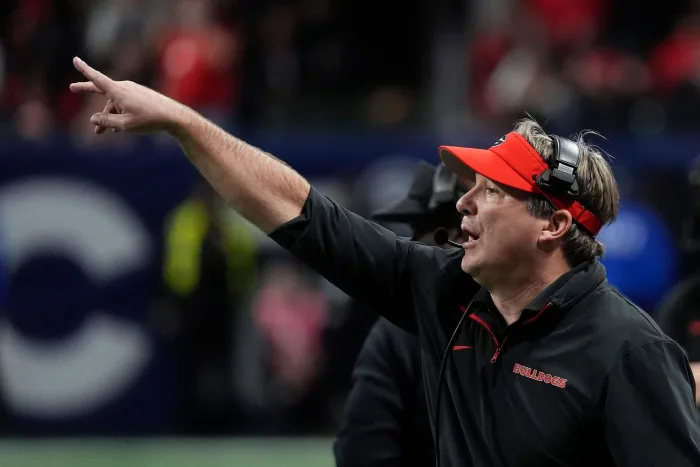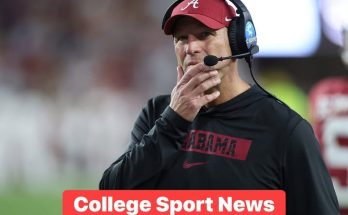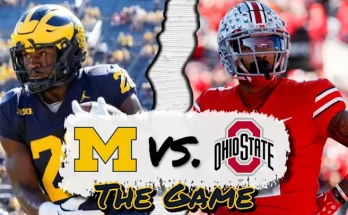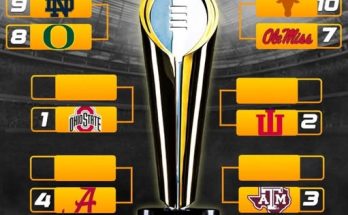As the recruitment process for Jared Curtis unfolds, it’s clear that the stakes have never been higher. The financial aspect, driven by the NIL landscape, has become an undeniable force in shaping where elite athletes decide to play. This development has not only increased the level of competition among major programs but also sparked debates regarding the fairness and integrity of the recruiting process.
The Role of NIL in Recruitment
With the introduction of NIL (Name, Image, and Likeness) rights, the recruitment game has evolved dramatically. In the past, college programs competed largely on the basis of coaching, facilities, and the opportunity to compete at a high level. However, now NIL opportunities have become a significant selling point for many top recruits.
For a player like Curtis, who is projected to have an NIL value of approximately $558,000, the ability to capitalize on his fame as a top quarterback becomes a game-changer. Georgia’s robust football program and strong alumni network offer Curtis an enticing platform to attract high-profile sponsorships, media deals, and merchandise opportunities. Georgia is positioning itself not only as a football powerhouse but also as a place where Curtis can maximize his earning potential before even stepping foot in the NFL.
For Texas, this shift is a critical challenge. Although the Longhorns are historically one of the most prestigious programs in the country, Georgia’s recruitment tactics, coupled with the promise of potentially larger NIL opportunities, are hard to ignore. Texas, however, is not backing down. The Longhorns have been known for their wealth of resources and strong football tradition, and they are aggressively working to convince Curtis that Austin offers just as much in terms of both football development and off-the-field opportunities.
Georgia’s Competitive Edge
In addition to the financial allure, Georgia’s football program is in an incredibly strong position to attract top-tier talent like Curtis. Under the leadership of Kirby Smart, Georgia has firmly established itself as a perennial contender for national championships. The Bulldogs’ recent success, including a back-to-back national championship victory, has positioned them as one of the top programs in the country. Smart’s ability to recruit at the highest level and develop elite talent, particularly at the quarterback position, makes Georgia an appealing destination for Curtis.
Georgia’s offense, which has evolved significantly over the past few years, provides an exciting environment for a star quarterback like Curtis. The opportunity to work under Bobo, an experienced offensive coordinator, and play in the SEC, which is often regarded as the most competitive football conference in the country, could be a key factor in Curtis’s decision.
Moreover, Georgia’s proximity to NFL scouts and its reputation for churning out pro-level talent could provide Curtis with a direct pipeline to the NFL. This is a powerful selling point, especially for a player as highly regarded as Curtis, whose ultimate goal may be to play professionally.
The Texas Longhorns’ Challenge
On the other hand, Texas is a proud program with a rich history and an undeniable appeal to recruits. The Longhorns have made significant strides in recent years under head coach Steve Sarkisian, who has revitalized the program and turned it into a consistent contender in the Big 12 Conference. The Longhorns have their own unique selling points, including their world-class facilities, the chance to play in the highly competitive Big 12, and a passionate fan base that rivals any in the country.
Texas has also been active in the NIL space, creating opportunities for athletes to capitalize on their name, image, and likeness. The Longhorns have partnered with several high-profile companies and organizations to offer their players a wide range of endorsement opportunities. For Curtis, this could mean lucrative deals with Texas-based brands, media outlets, and other businesses eager to align with one of the country’s top quarterback prospects.
However, the main challenge for Texas lies in Georgia’s momentum. With the Bulldogs’ recent success and the allure of an SEC championship, Curtis could be tempted by the opportunity to compete at the highest level against top-tier defenses week in and week out. The question remains whether the Longhorns can match the level of competition and NIL opportunities that Georgia is offering.
The Impact of Transfer Portal on Recruitment
While much of the attention surrounding Curtis has been focused on the immediate future, it’s also important to recognize the impact of the transfer portal on college football recruiting. As the NCAA transfer portal continues to grow in prominence, programs are not only recruiting high school talent but also looking at established college players who can step in and make an immediate impact.
For Curtis, this may be a consideration as he evaluates his options. The landscape of college football is changing rapidly, and many top recruits are now weighing the possibility of transferring to another school if things don’t work out immediately. The ability to move freely through the portal has made some players more cautious in their decision-making, as they no longer feel locked into a single program for the entirety of their collegiate careers.
For programs like Georgia and Texas, the emergence of the transfer portal means they have to ensure they don’t just recruit well, but also maintain depth on their roster. Both schools will likely have backup plans in place in case Curtis or another highly rated quarterback chooses to leave.
The Broader Implications for College Football
The recruitment of players like Jared Curtis highlights the growing trend of financial considerations shaping the future of college football. As NIL deals become increasingly integral to recruitment strategies, there is a concern that wealthier programs may have an unfair advantage in attracting top talent. While NIL opportunities are meant to give athletes a fair shot at monetizing their personal brand, they also raise the question of whether the focus on financial rewards might overshadow the traditional aspects of recruiting, such as coaching quality, facilities, and overall player development.
Additionally, the increasing importance of NIL in recruitment has the potential to further divide programs based on financial capabilities. Powerhouse programs like Georgia, Texas, and others with extensive resources are in a unique position to leverage NIL to attract the best players. Meanwhile, smaller programs may struggle to compete with these larger institutions unless they develop creative ways to provide similar opportunities for their recruits.



